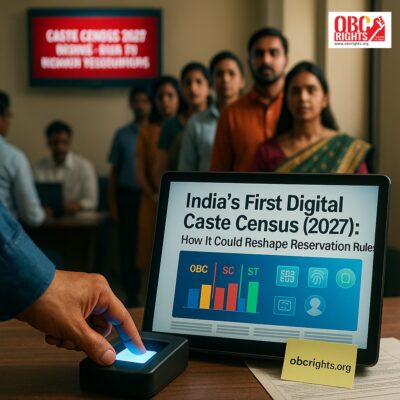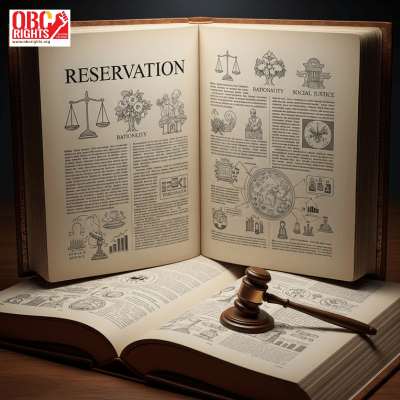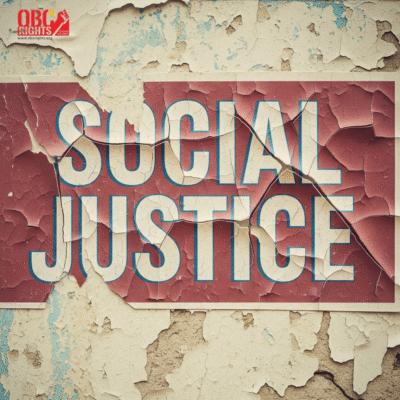A New Chapter in India’s Social Justice Story
For the first time in Independent India’s history, a full-scale Digital Caste Census is set to happen in 2027. This isn’t just another government data exercise. It could become a game-changer — one that reshapes how we think about reservation, representation, and true equality.
Why Does a Caste Census Matter?
Let’s be honest, how can we fix inequality if we don’t even know who is being left behind?
India has spent decades debating reservation policies for Scheduled Castes (SC), Scheduled Tribes (ST), and Other Backward Classes (OBC), but the last caste-based data we officially have is from 1931. That’s nearly a century ago.
Imagine making health policy without knowing how many people have diabetes. That’s what our current reservation system is like — flying blind.
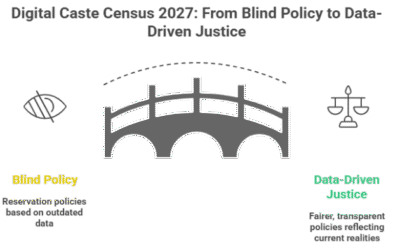
The 2027 Digital Caste Census will bring clarity. It will tell us:
- How many people actually belong to each caste and sub-caste
- What are their education levels, incomes, and occupations?
- Who still lacks access to opportunities — and who has moved ahead
- Which Classes or Communities are less represented in Government & Public Services?
In short, it will show us who truly needs support — and who no longer does.
What Could Change?
Right now, OBCs get 27% reservation at the central level. But this number is based on old estimates, not actual, updated data. Once the caste census is done:
- Reservation quotas could be adjusted to reflect real population shares
- The “creamy layer” concept (economic cut-off within OBCs) might be refined
- States could push for sub-categorization of OBCs, ensuring fair distribution among dominant and less-represented OBC groups
- It could also settle long-running disputes — like who belongs in which category
Why Digital?
Using digital tools like tablets, fingerprint scans, and live data checks helps make the caste census faster and more accurate. It helps avoid errors, prevents false information, and speeds up the whole process. Most importantly, it creates a clear and honest record that’s hard to change or cheat.
The Real Question: Will We Act on the Data?
Having data is one thing. Using it for justice is another.
If this census shows that certain castes are underrepresented in education and jobs, will we expand support for them? If some groups have progressed well, should their benefits be reduced? These won’t be easy decisions — but they will be fairer and more informed.
Truth Makes Some Uncomfortable — But It Also Sets Us Free
Not everyone wants this kind of data made public. Some powerful groups worry that a clear picture of caste realities will challenge their influence. And maybe it will — but isn’t that the point of justice?
For decades, decisions around reservation have been made with limited facts and a lot of assumptions. That’s how inequality survives/exists.
The 2027 caste census isn’t against any community — it’s about choosing truth over fear. It’s not about division. It’s about fairness, transparency, and finally making policy that reflects how India really lives today.
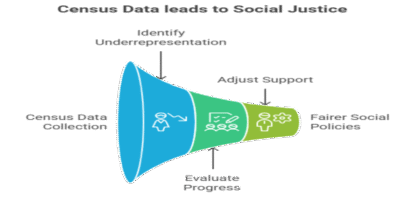
Final Thoughts: A Step Toward Real Reform
The 2027 Digital Caste Census is more than just numbers. It is a mirror — showing us where we stand and how far we still need to go. If we use it wisely, it can help India build a reservation system based on both need and justice, not just assumptions or politics.
It’s time to move from identity-based politics to data-backed policy.
Support the movement for data-driven caste justice at obcrights.org
Real reform starts with real numbers. Let’s not wait another 100 years.

